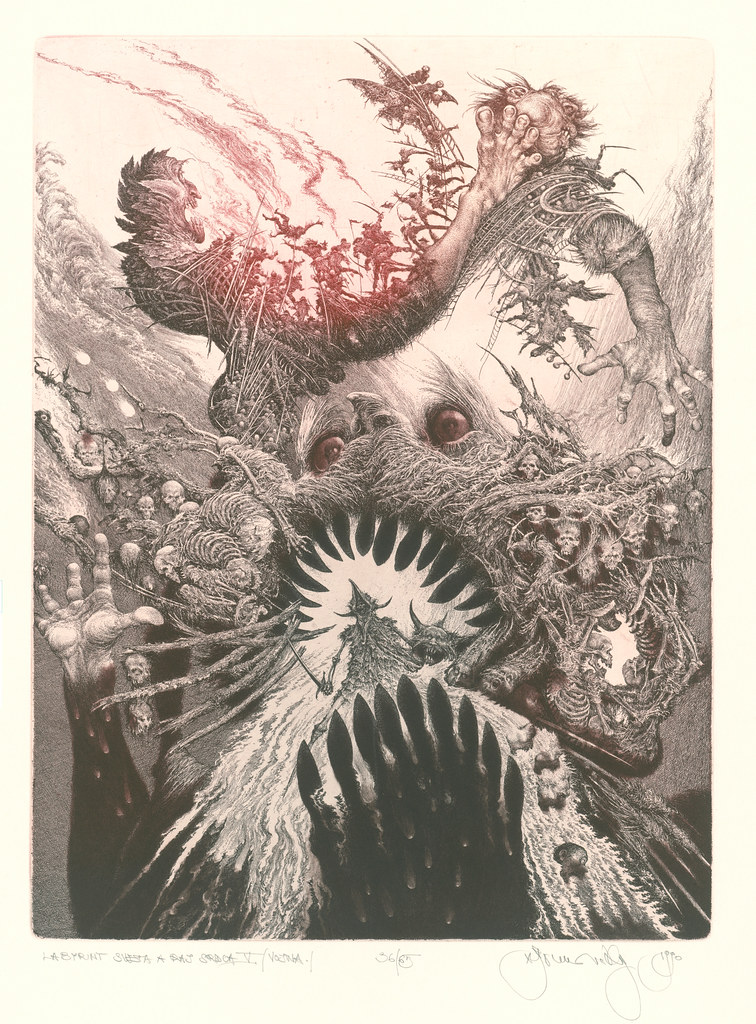 Labyrinth of the World and Paradise of the heart V - War, 1990
Labyrinth of the World and Paradise of the heart V - War, 1990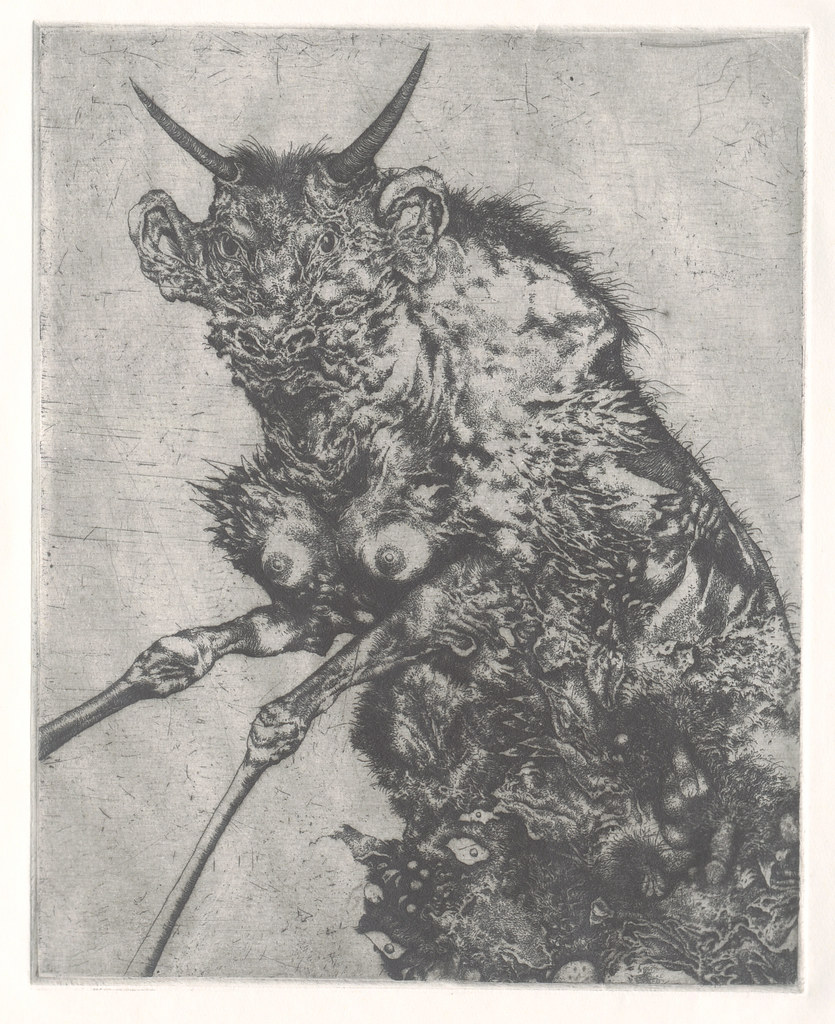 Beautiful Italy XII. 1970
Beautiful Italy XII. 1970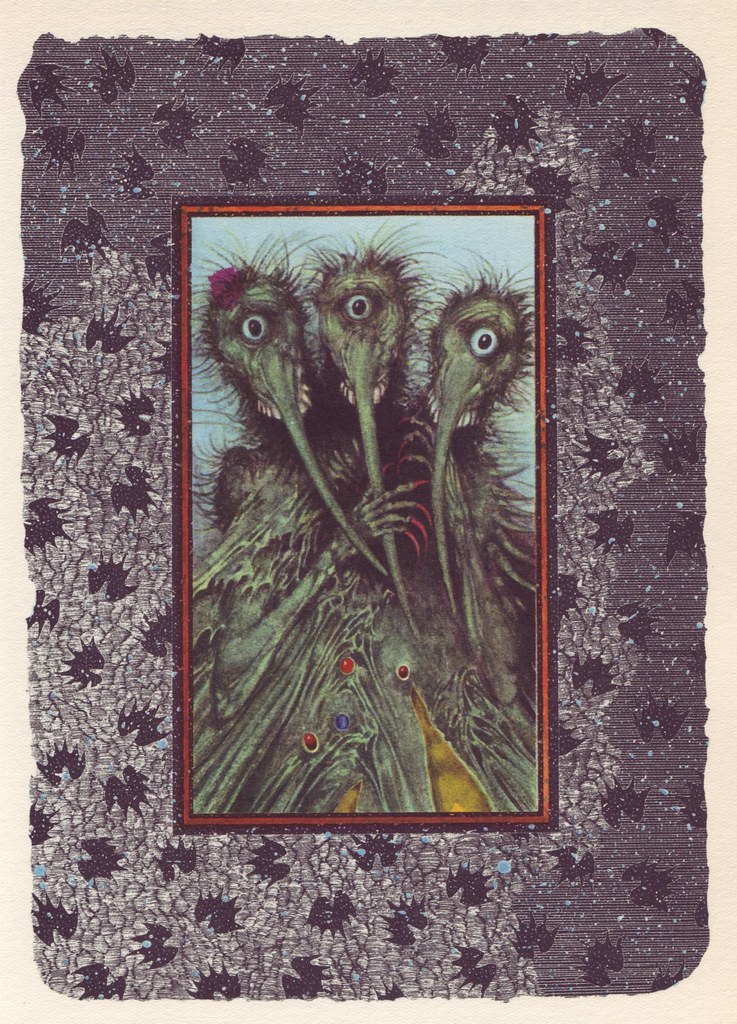 Illustration for Tri Princezne V Belasej Skale, 1972
Illustration for Tri Princezne V Belasej Skale, 1972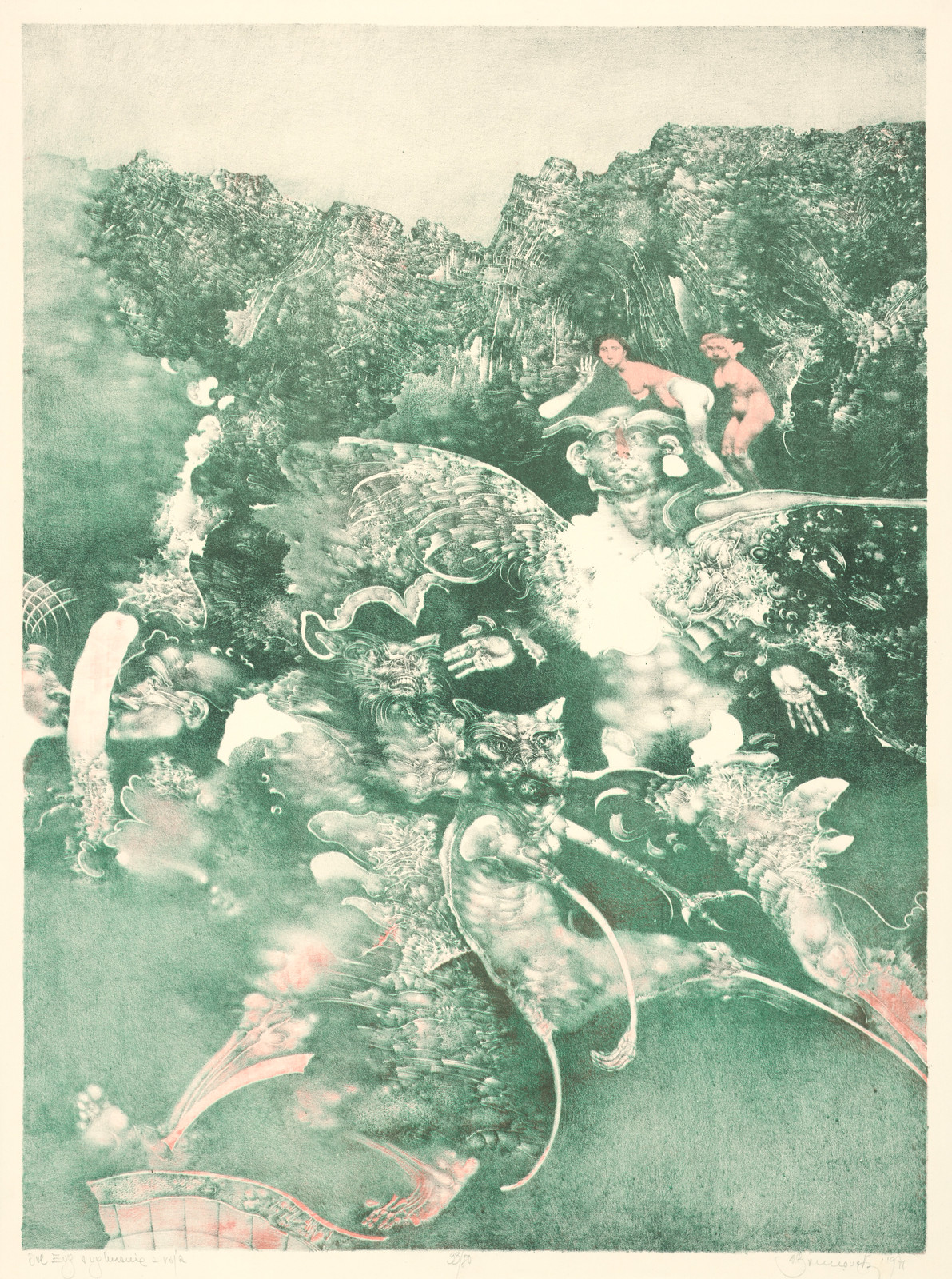 Two Eve and the Expulsion from Paradise, 1971
Two Eve and the Expulsion from Paradise, 1971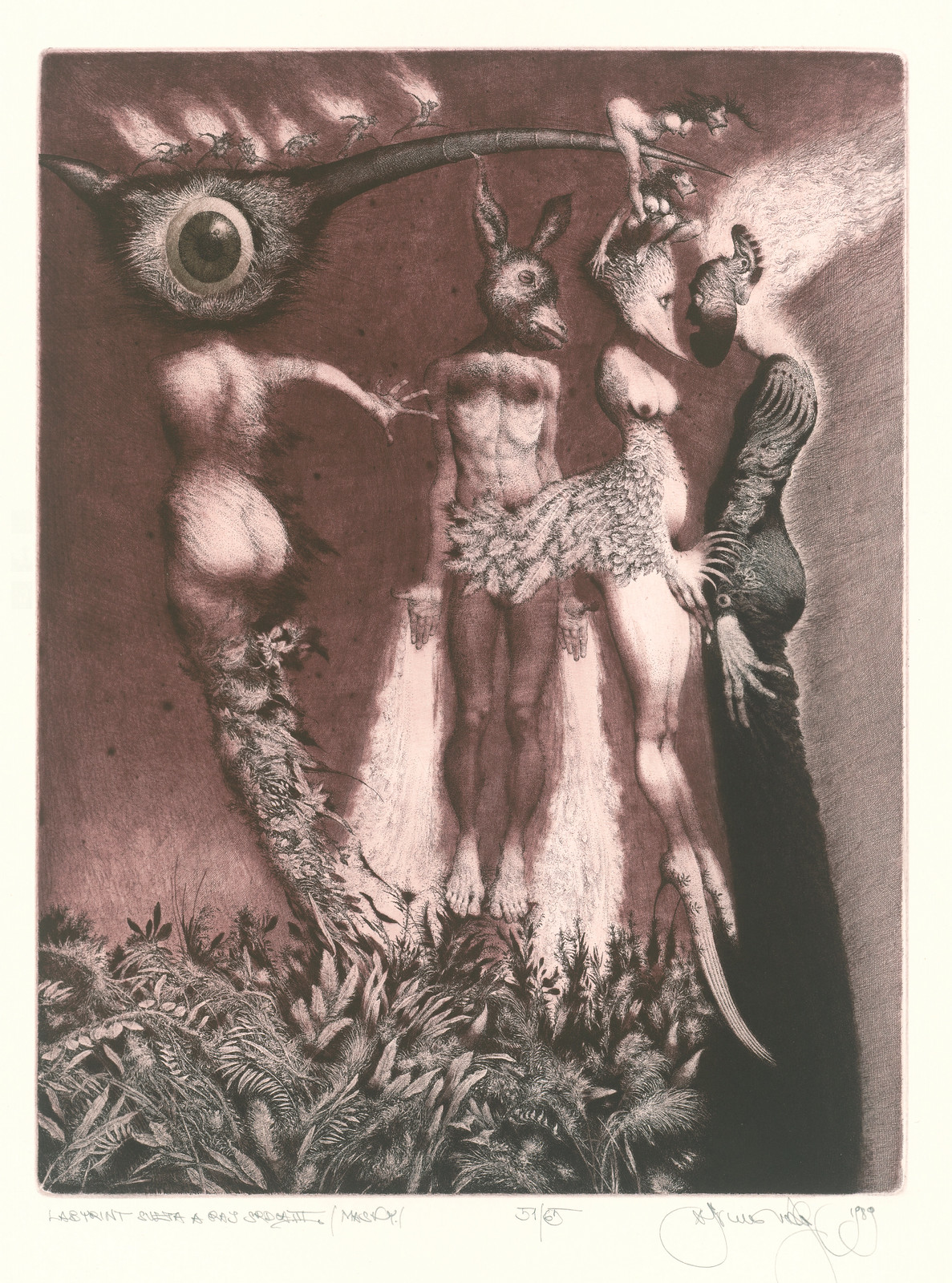 Labyrinth of the World and Eden of the Heart III . - Masks, 1989
Labyrinth of the World and Eden of the Heart III . - Masks, 1989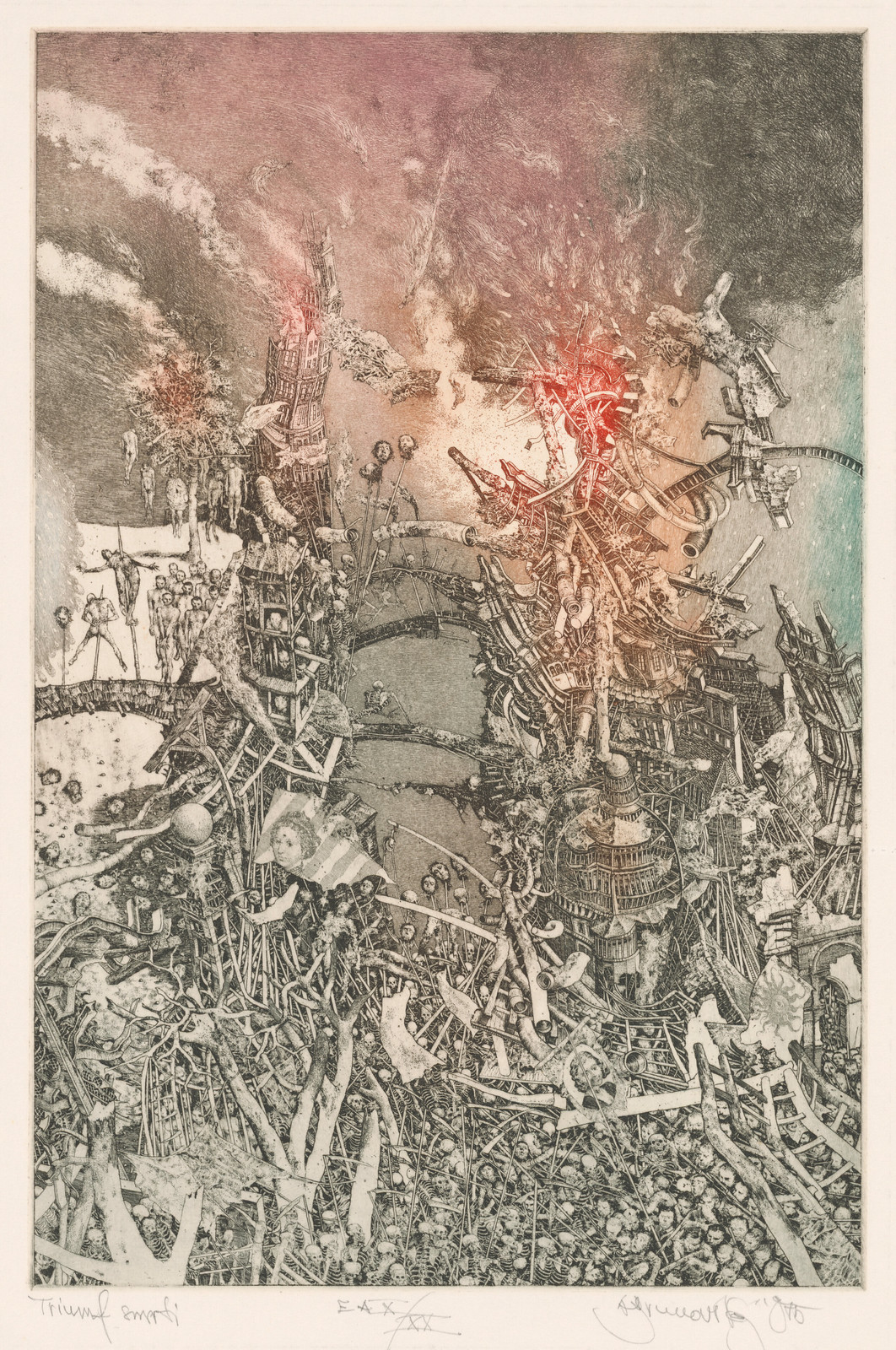 The Triumph of Death, 1975
The Triumph of Death, 1975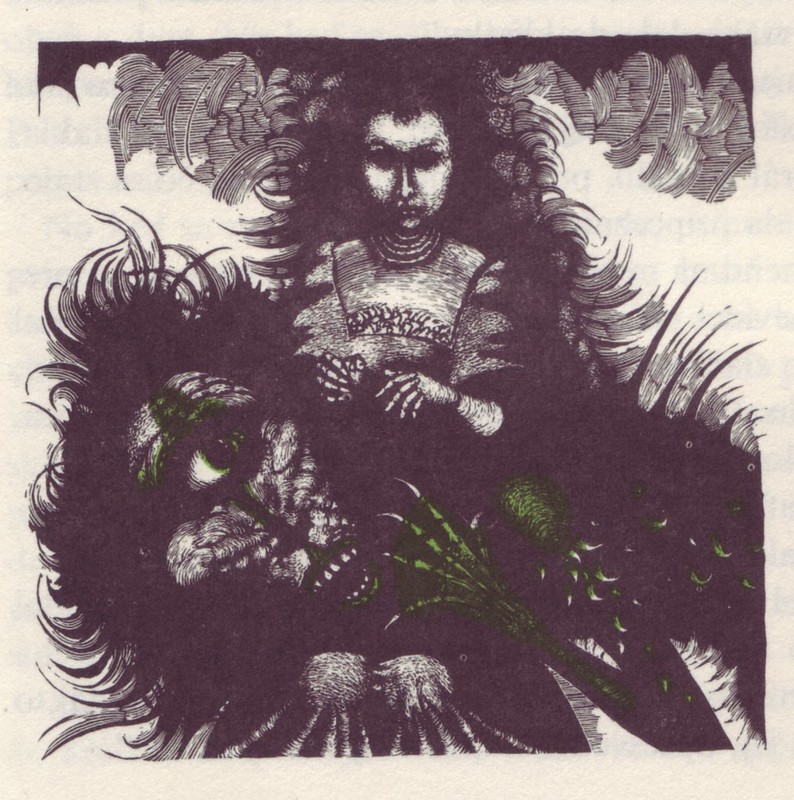 2nd Illus. for Tri Princezne V Belasej Skale, 1972
2nd Illus. for Tri Princezne V Belasej Skale, 1972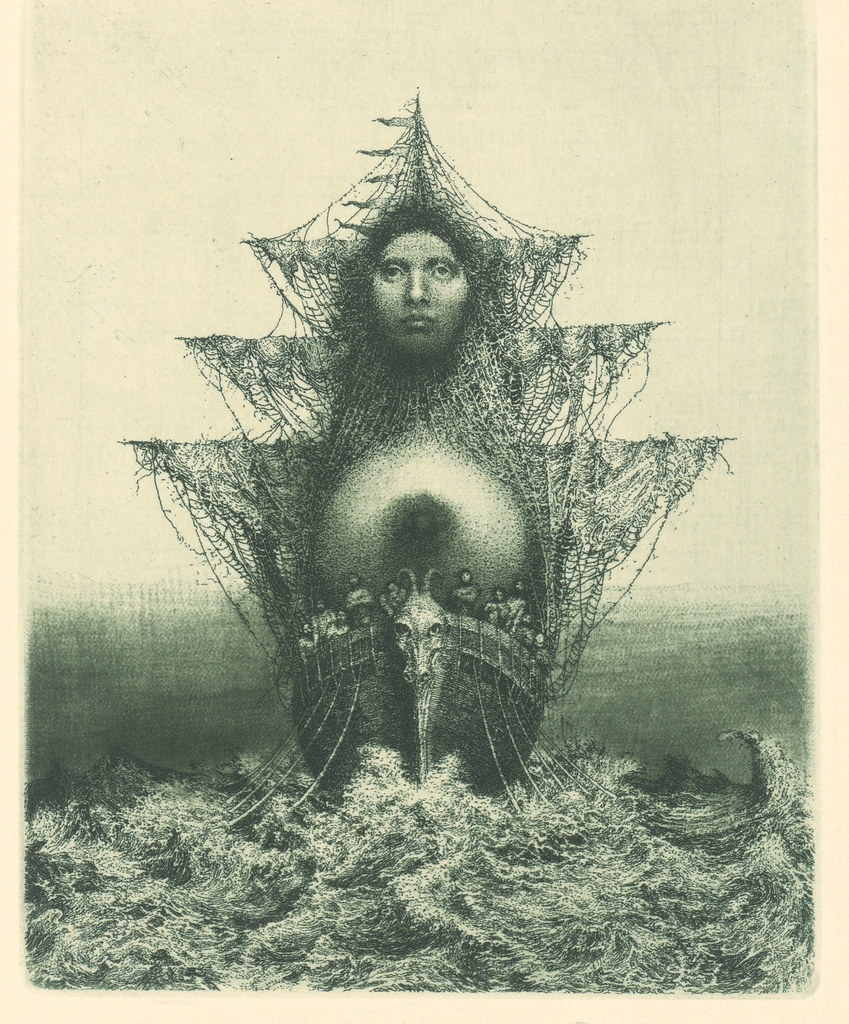 Barge Láskomorňa, 1985
Barge Láskomorňa, 1985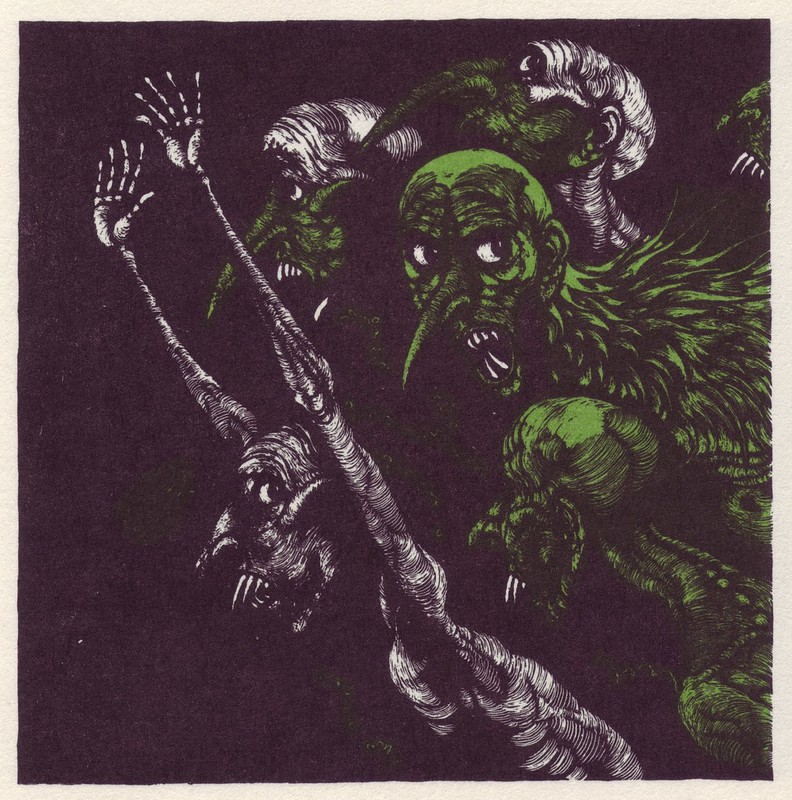 Illus. for Tri Princezne V Belasej Skale, 1972
Illus. for Tri Princezne V Belasej Skale, 1972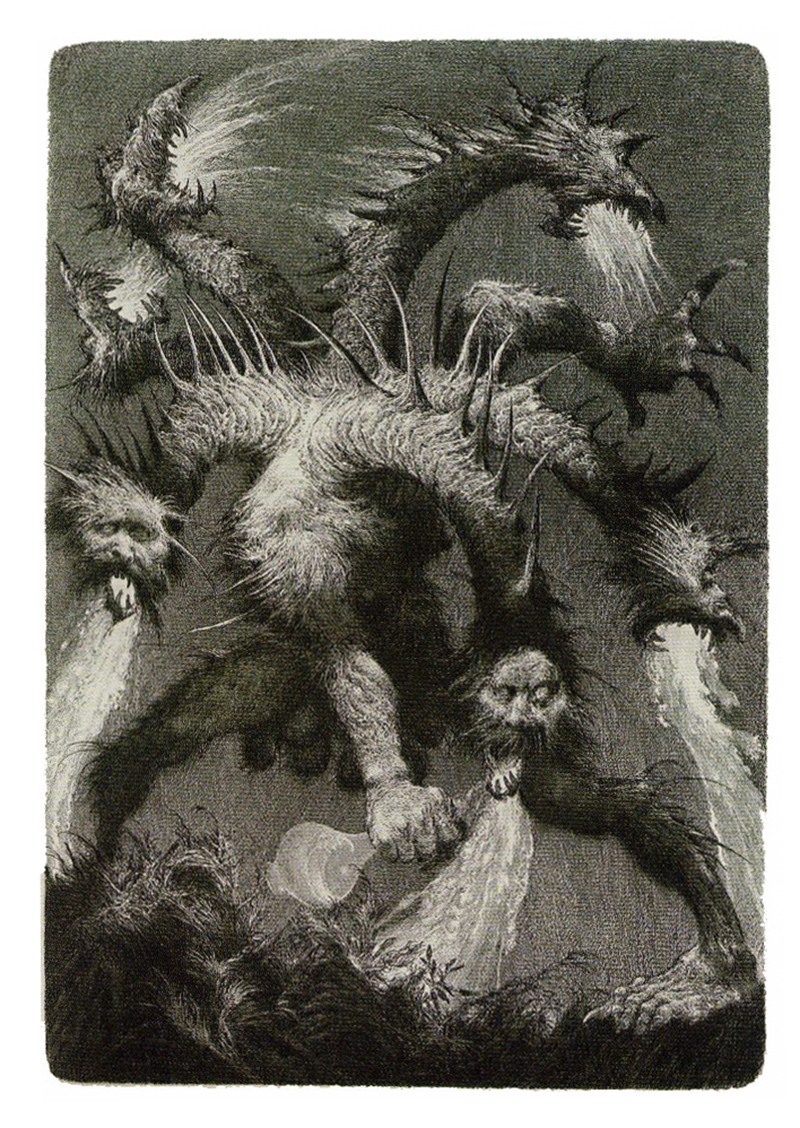 Beast
Beast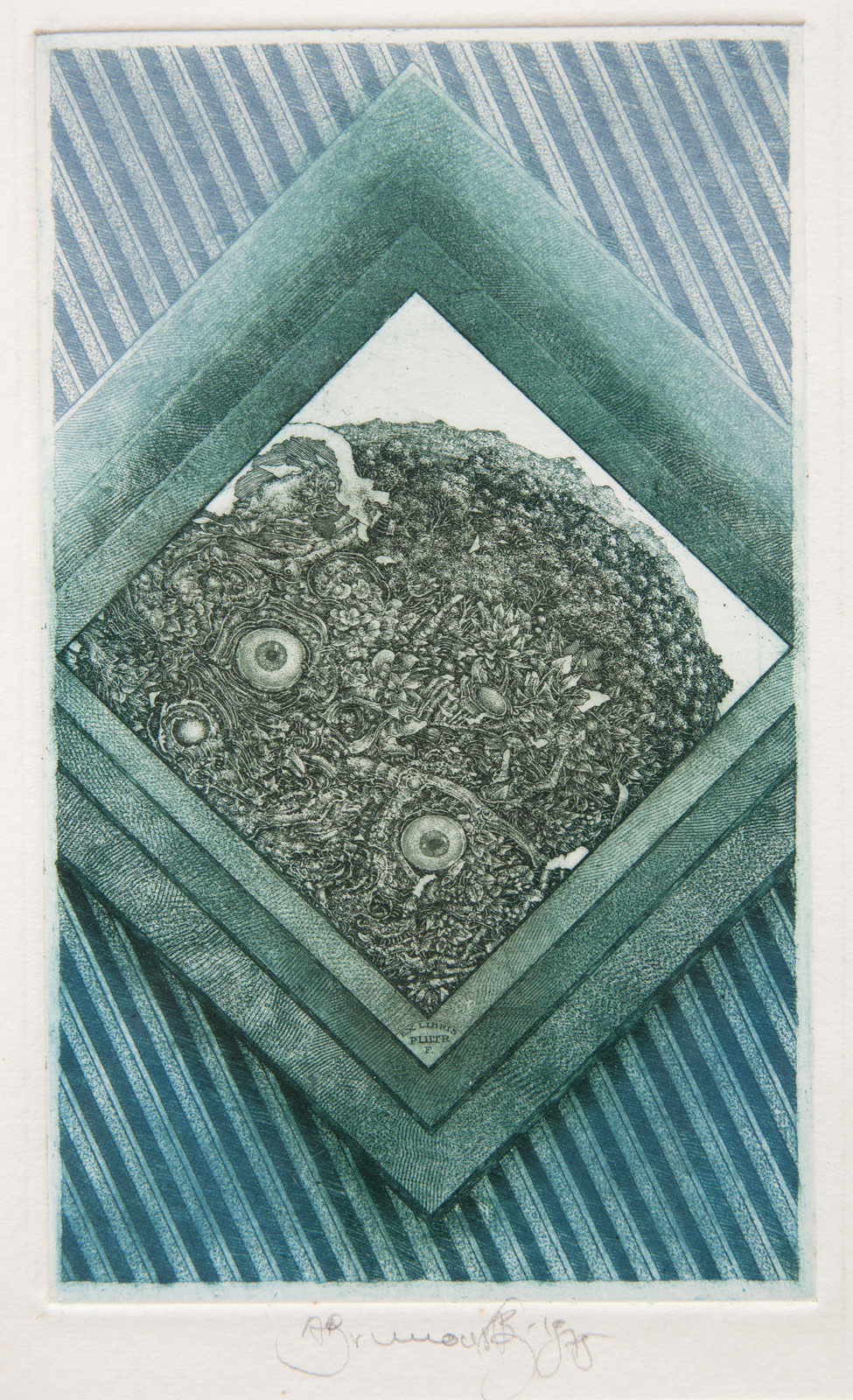 Tam, kde sú oči zeme
Tam, kde sú oči zeme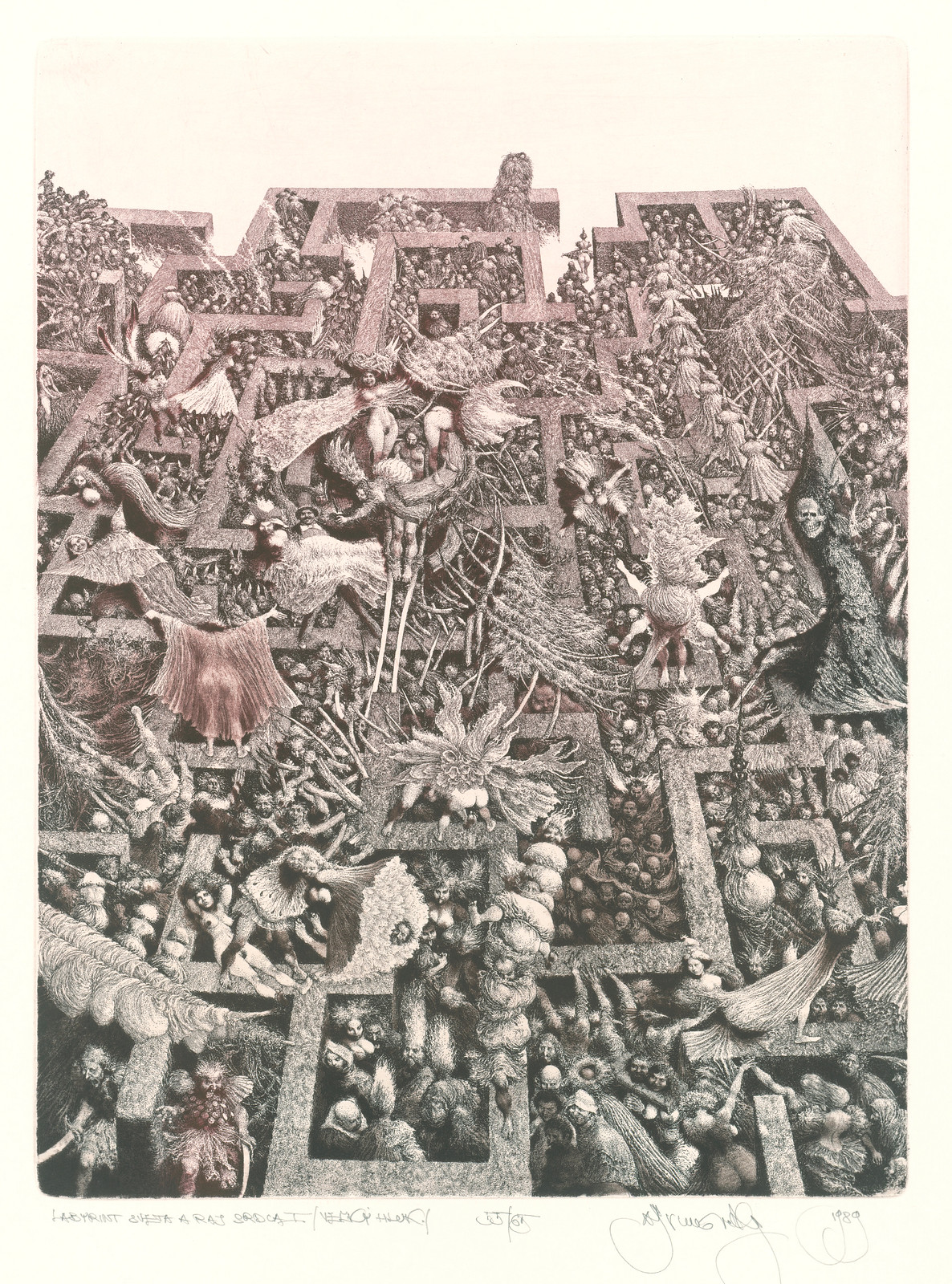 Labyrinth of the World and Paradise of the heart I. - Big Noise, 1989
Labyrinth of the World and Paradise of the heart I. - Big Noise, 1989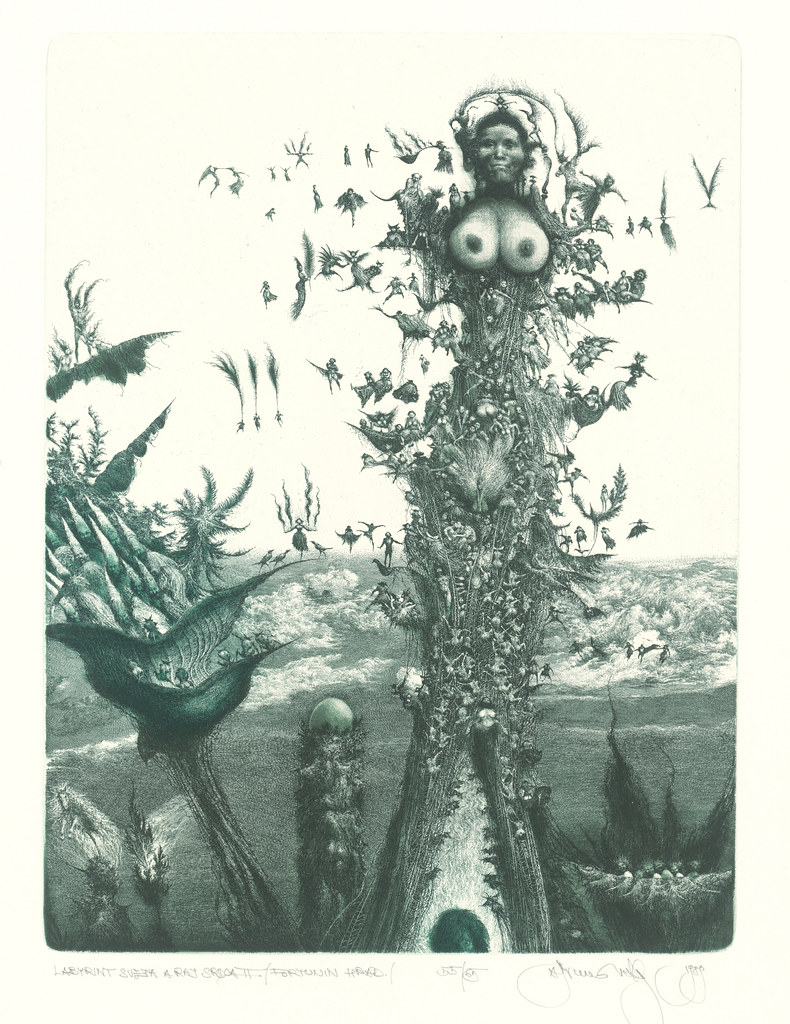 Labyrinth of the World and Eden of the Heart II . - Fortune Castle, 1989
Labyrinth of the World and Eden of the Heart II . - Fortune Castle, 1989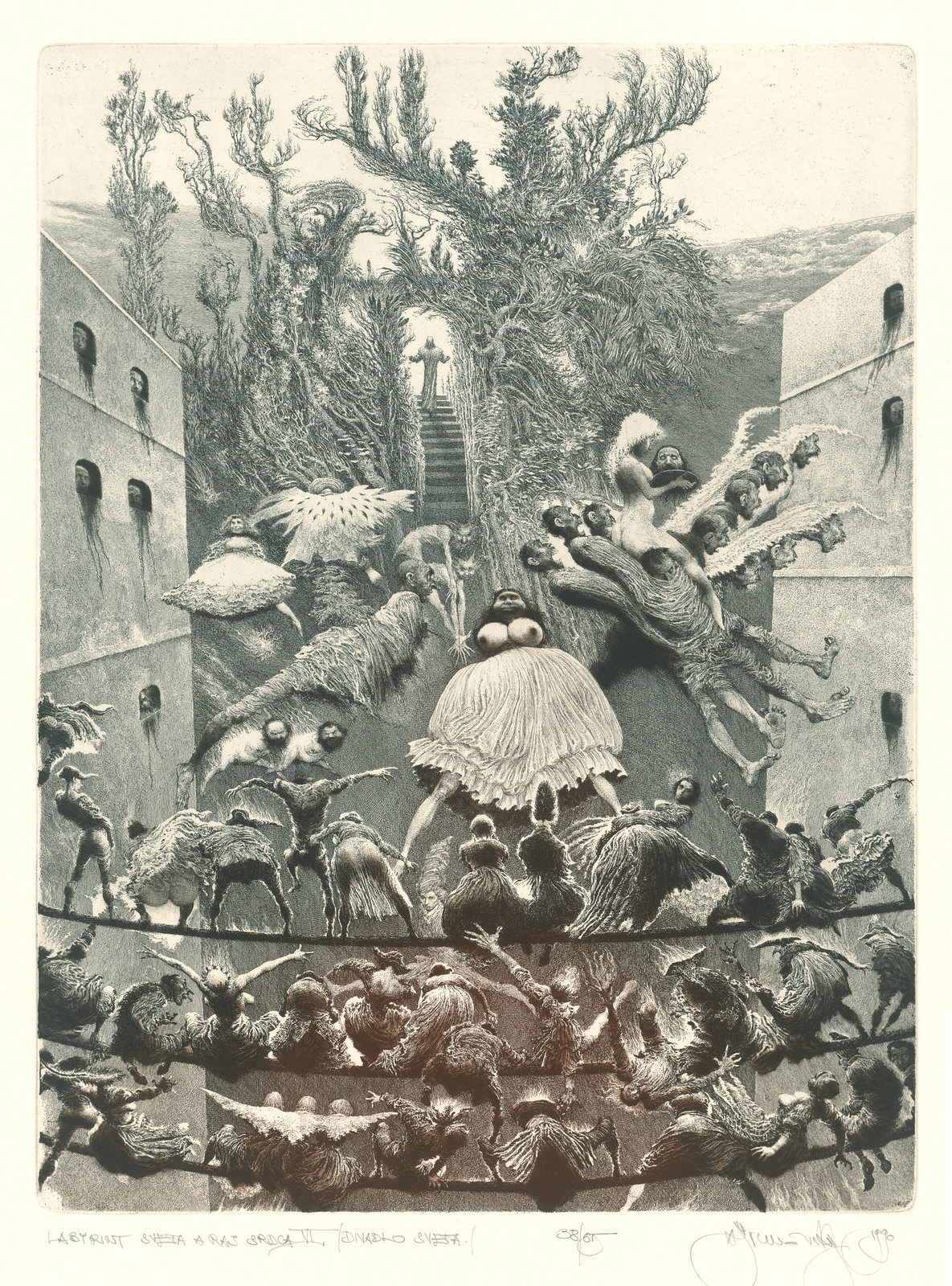 Labyrinth of the World and Eden of the Heart VI . - Theatre World, 1990
Labyrinth of the World and Eden of the Heart VI . - Theatre World, 1990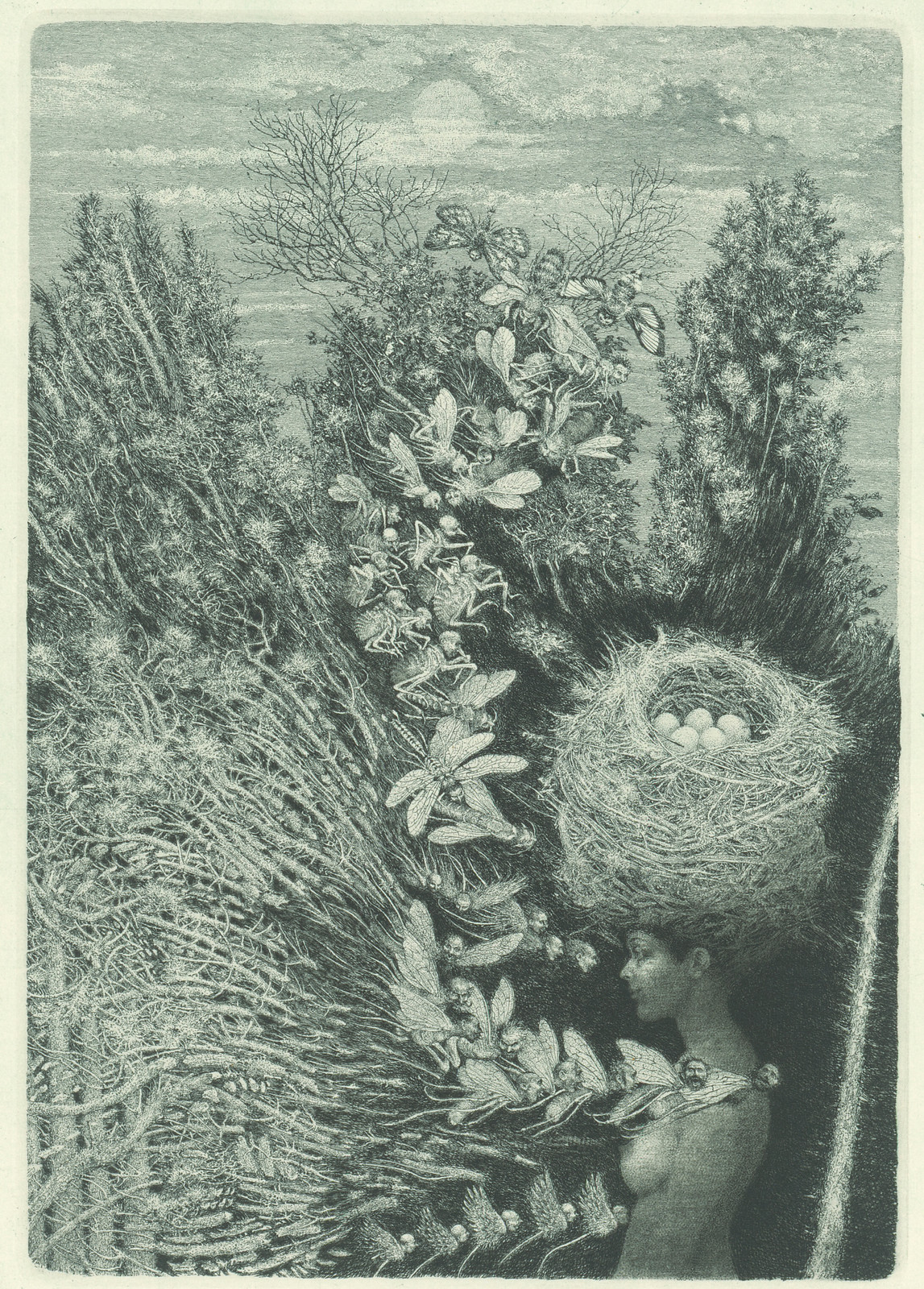 Praise Tangled Dreams VI, 1985
Praise Tangled Dreams VI, 1985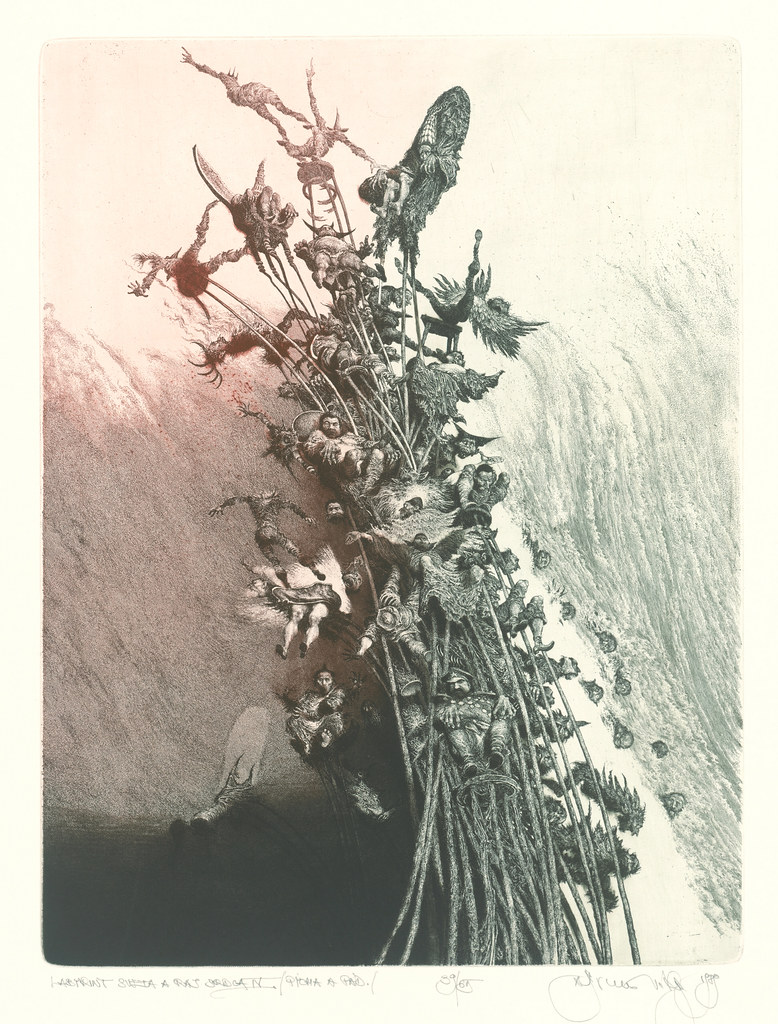 Labyrinth of the World and Eden of the Heart IV . - Pride and Fall, 1989
Labyrinth of the World and Eden of the Heart IV . - Pride and Fall, 1989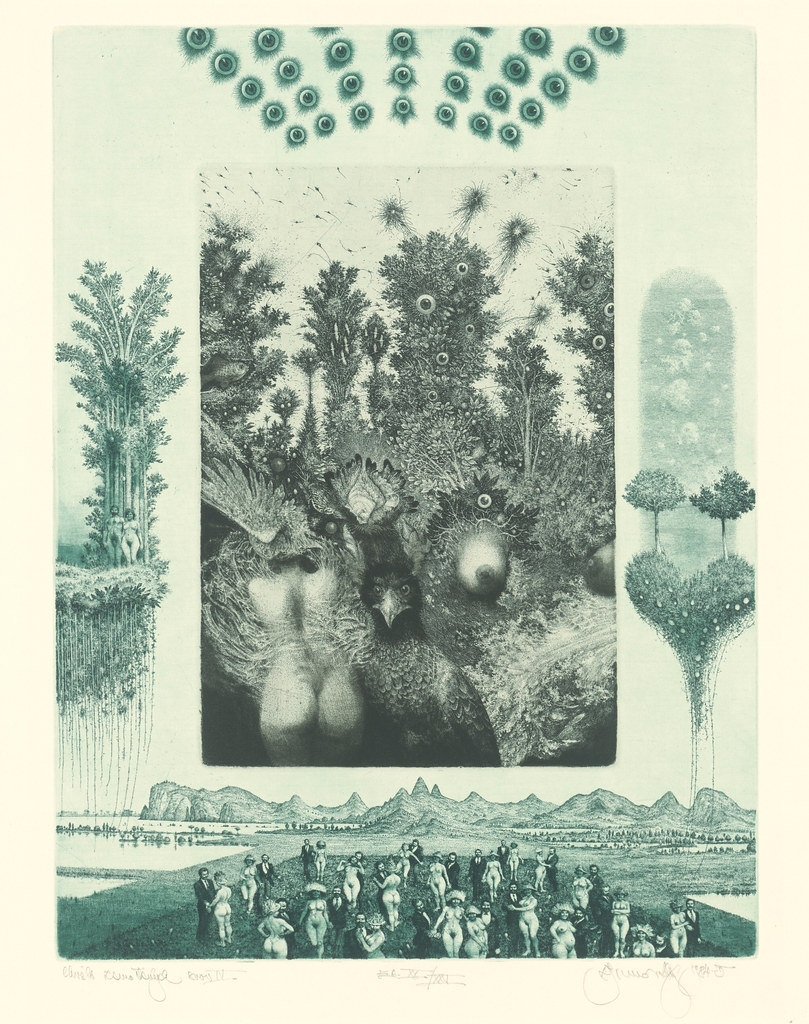 Praise Tangled Dream Team IV, 1985
Praise Tangled Dream Team IV, 1985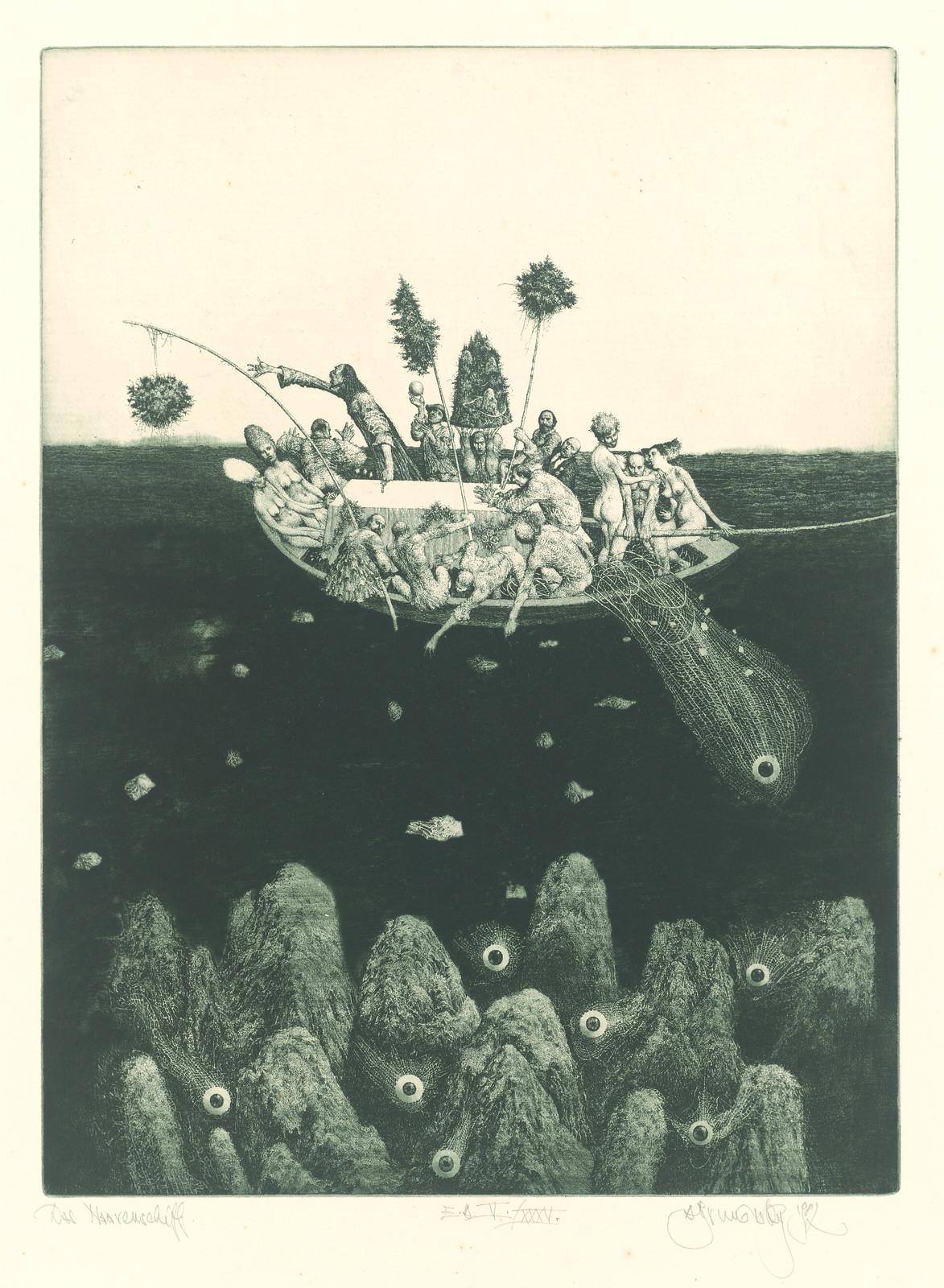 The Ship of Fools, 1982
The Ship of Fools, 1982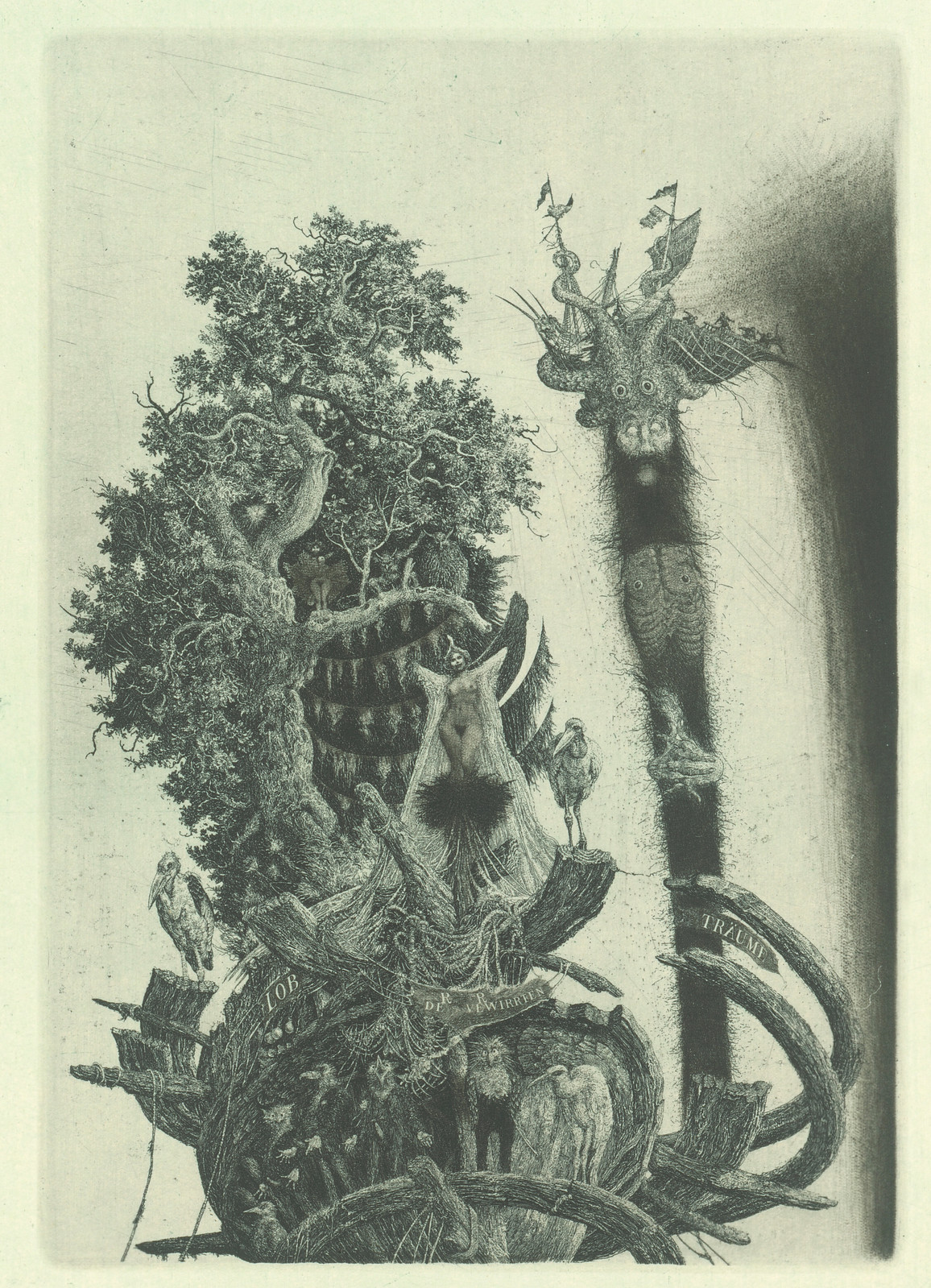 Praise Tangled Dreams IX. 1985–1986
Praise Tangled Dreams IX. 1985–1986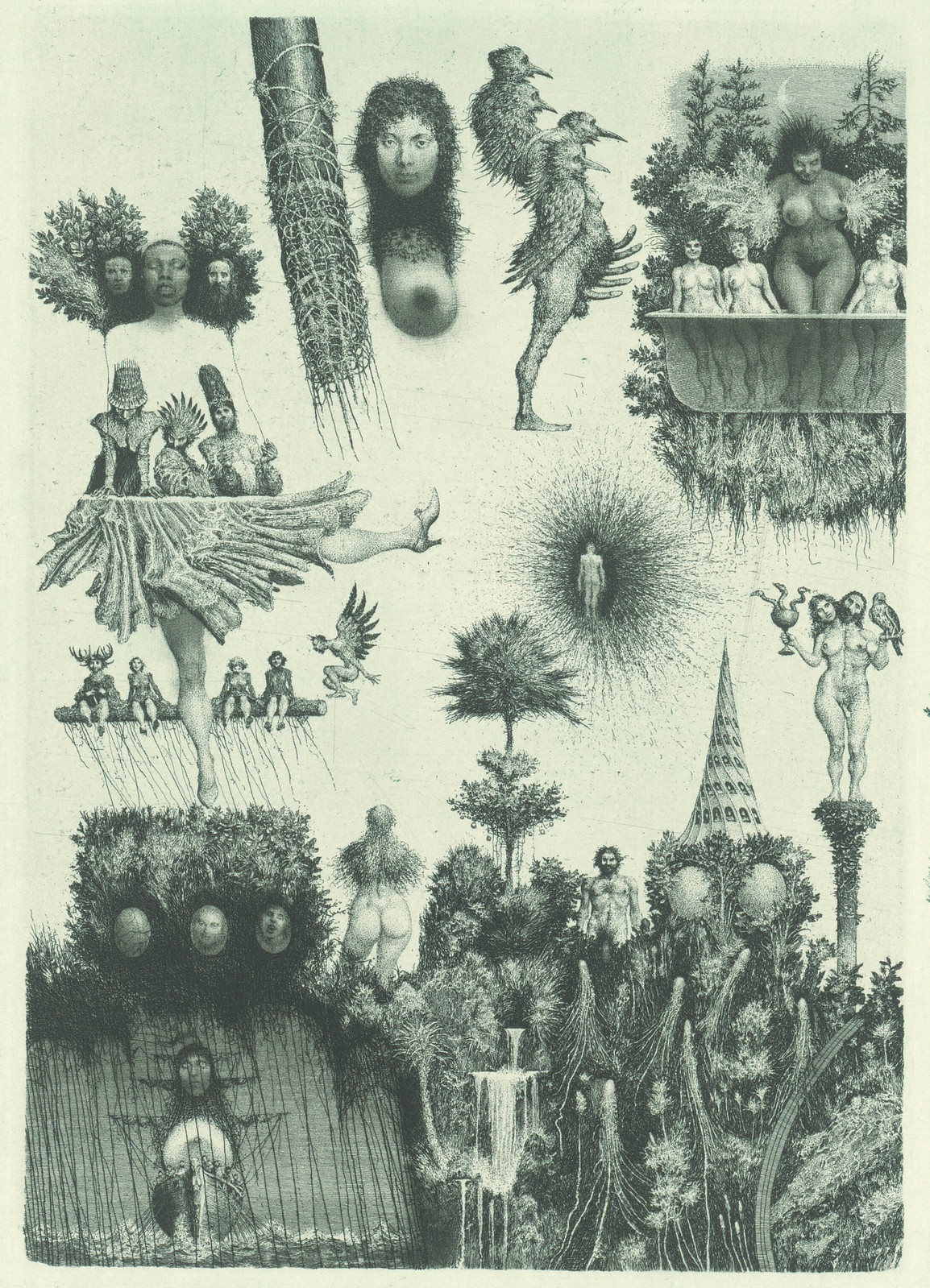 Praise Tangled Dreams VIII, 1985
Praise Tangled Dreams VIII, 1985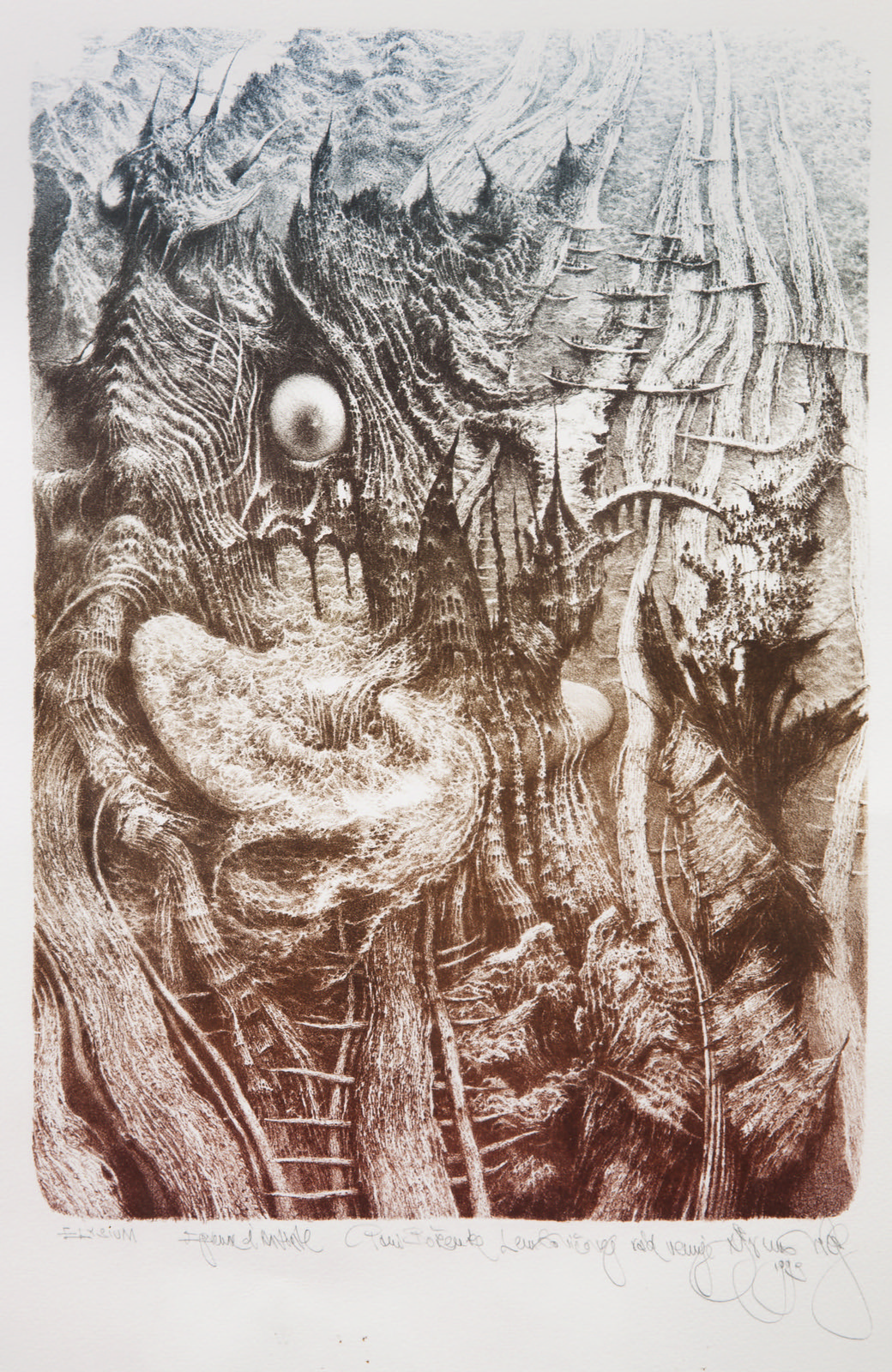 Elyseum
Elyseum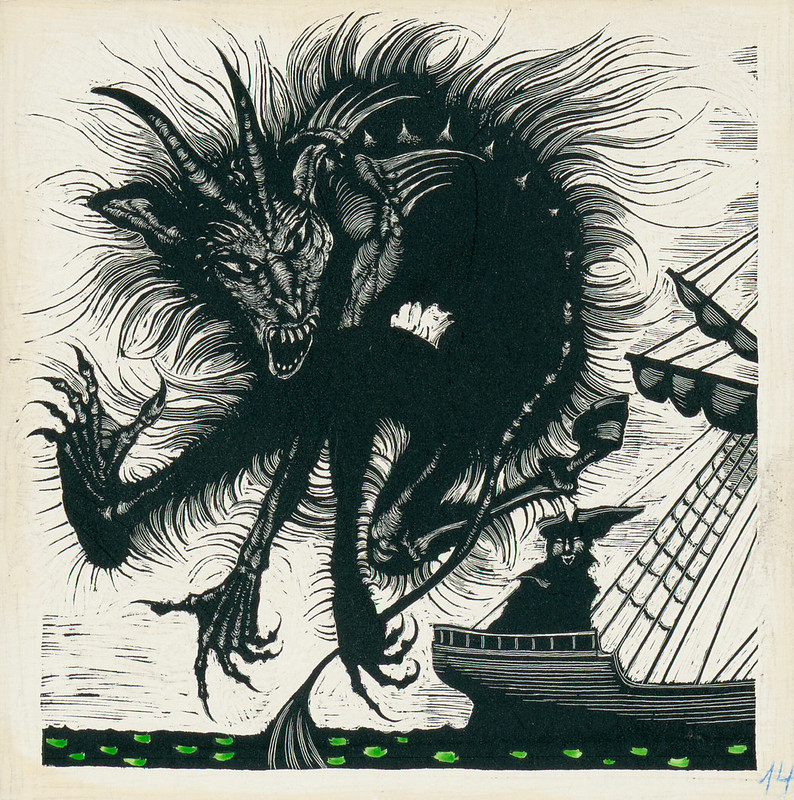 Ark and the Devil, 1970–1971
Ark and the Devil, 1970–1971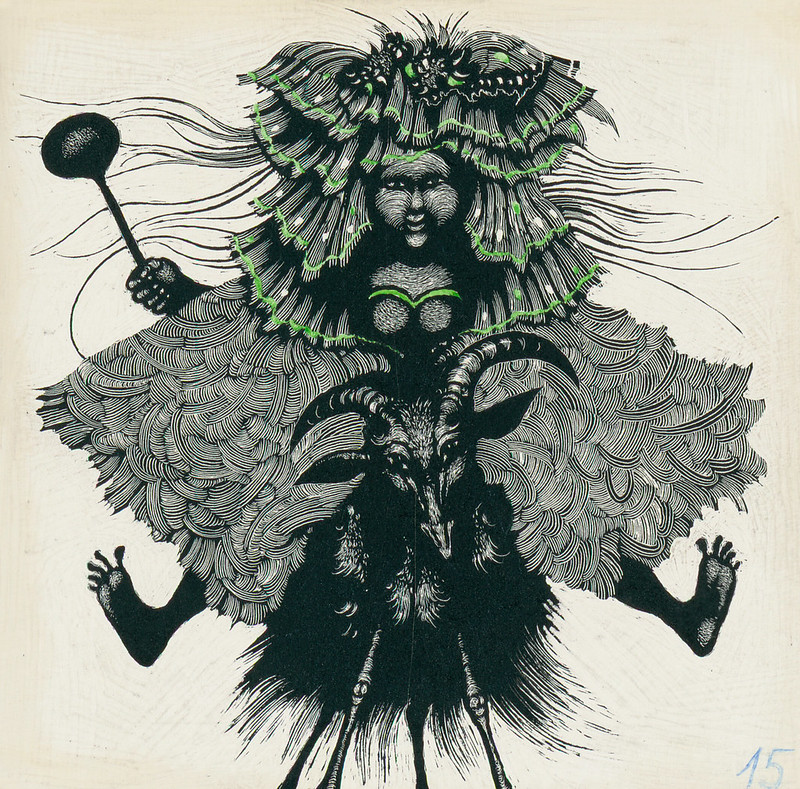 Krinolína, 1970–1971
Krinolína, 1970–1971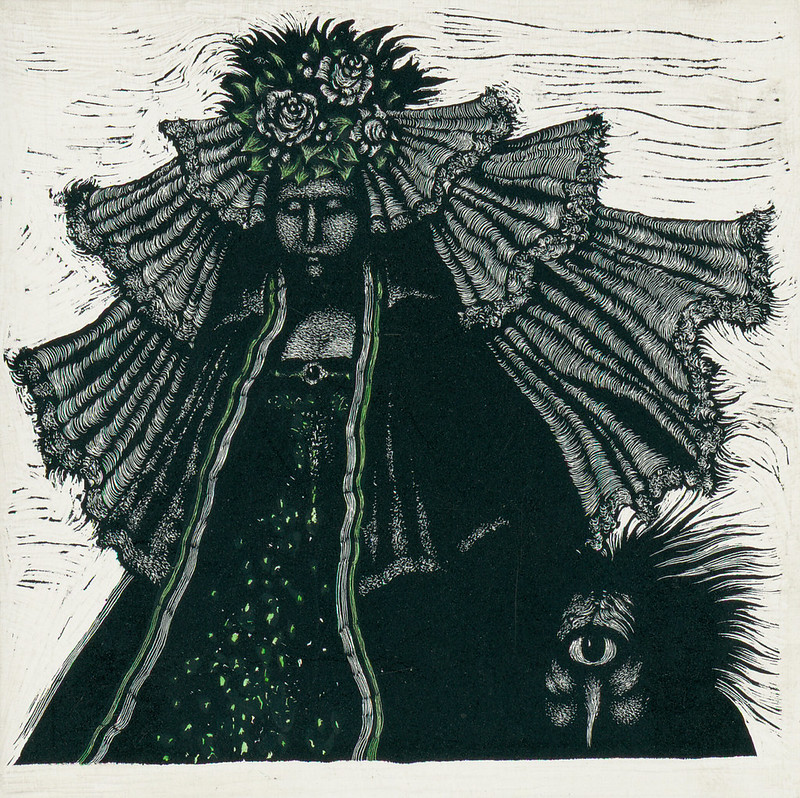 Závoj, 1970–1971
Závoj, 1970–1971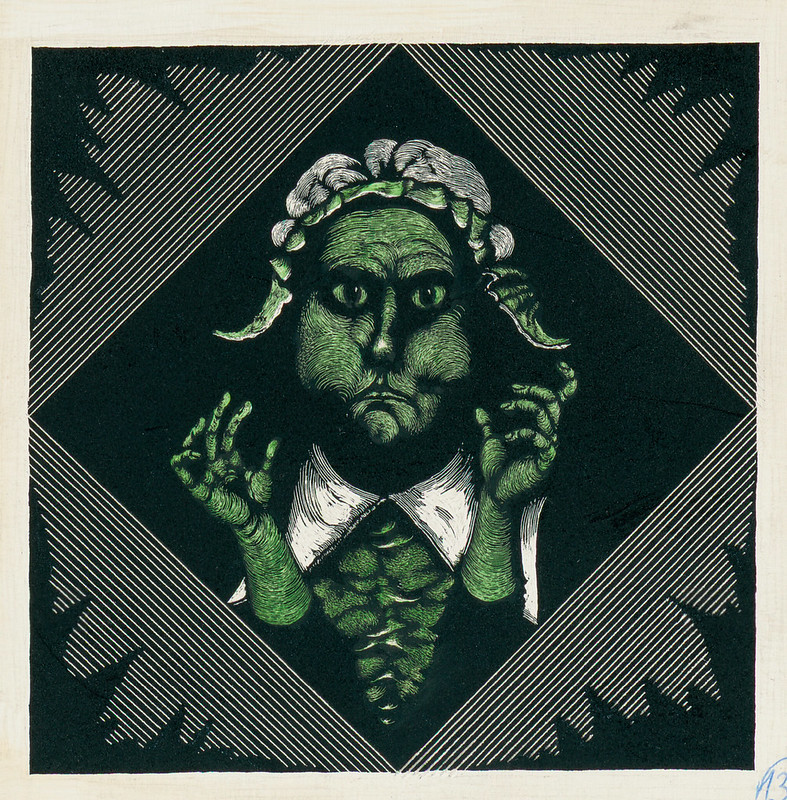 Žena v čepci, 1970–1971
Žena v čepci, 1970–1971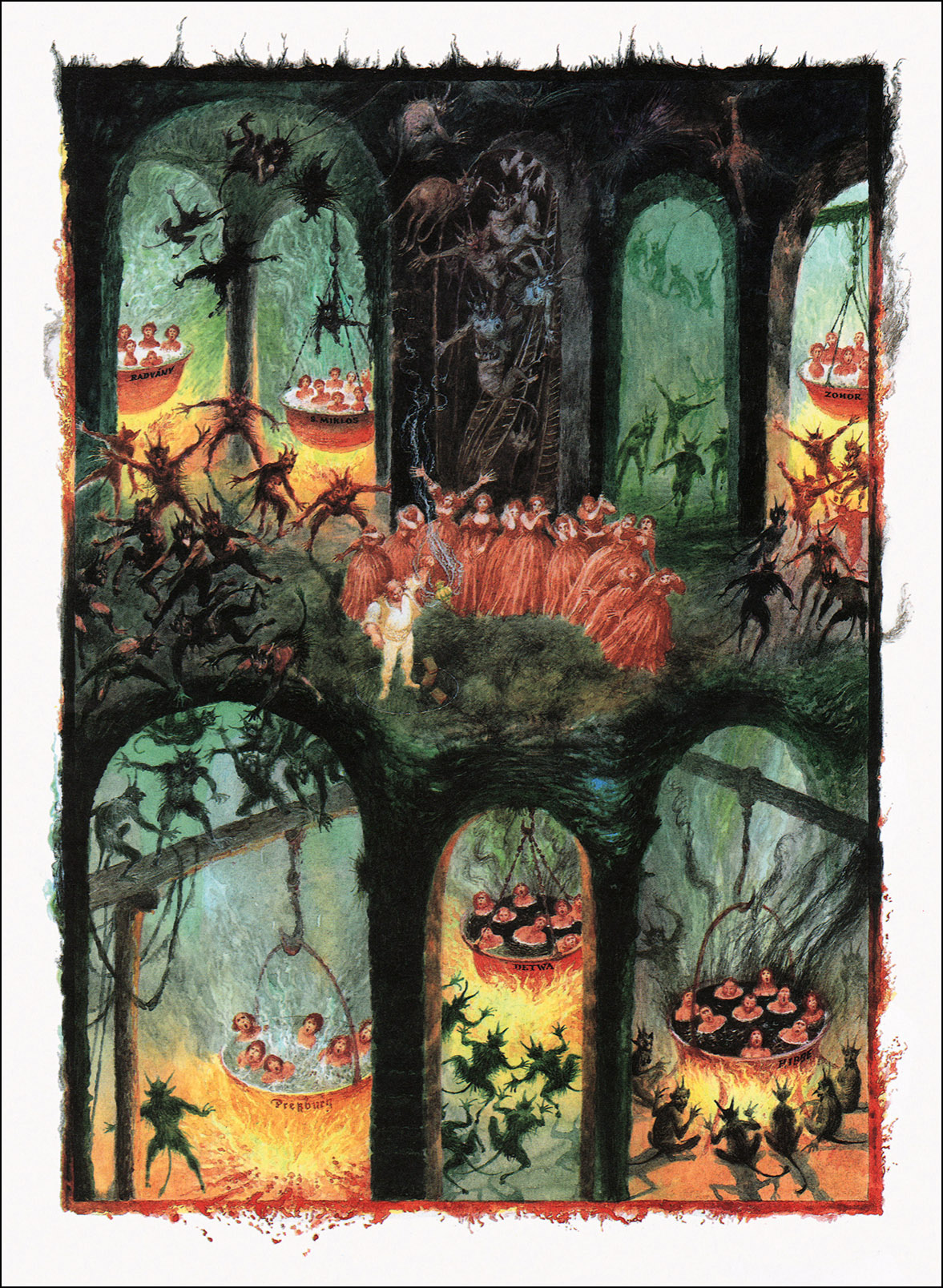 Illustration from Pavol Dobšinský's "Slovak Fairy Tales - The third book from the collection of Pavol," 1988
Illustration from Pavol Dobšinský's "Slovak Fairy Tales - The third book from the collection of Pavol," 1988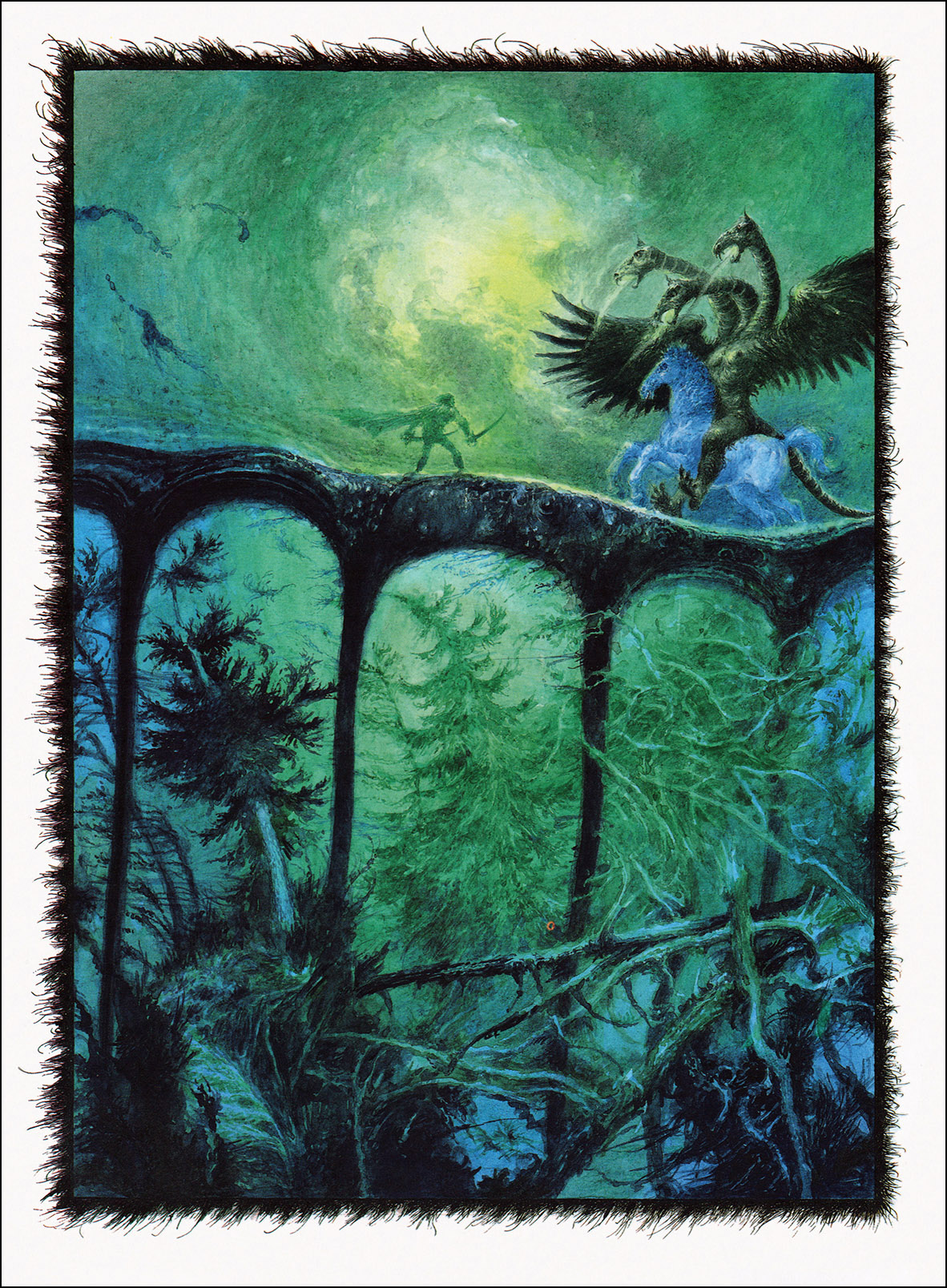 Illustration from Pavol Dobšinský's "Slovak Fairy Tales - The third book from the collection of Pavol," 1988
Illustration from Pavol Dobšinský's "Slovak Fairy Tales - The third book from the collection of Pavol," 1988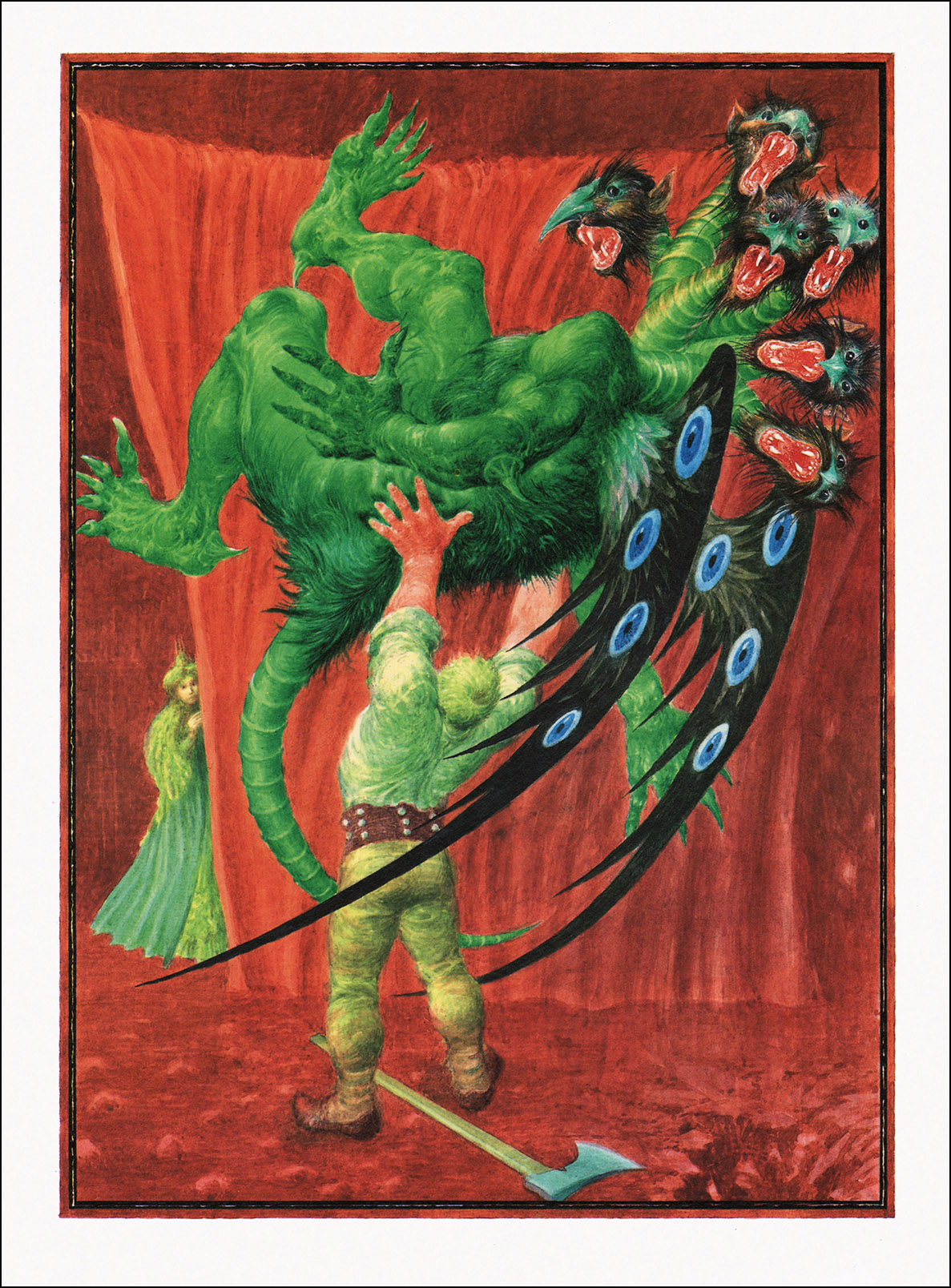 Illustration from Pavol Dobšinský's "Slovak Fairy Tales - The third book from the collection of Pavol," 1988
Illustration from Pavol Dobšinský's "Slovak Fairy Tales - The third book from the collection of Pavol," 1988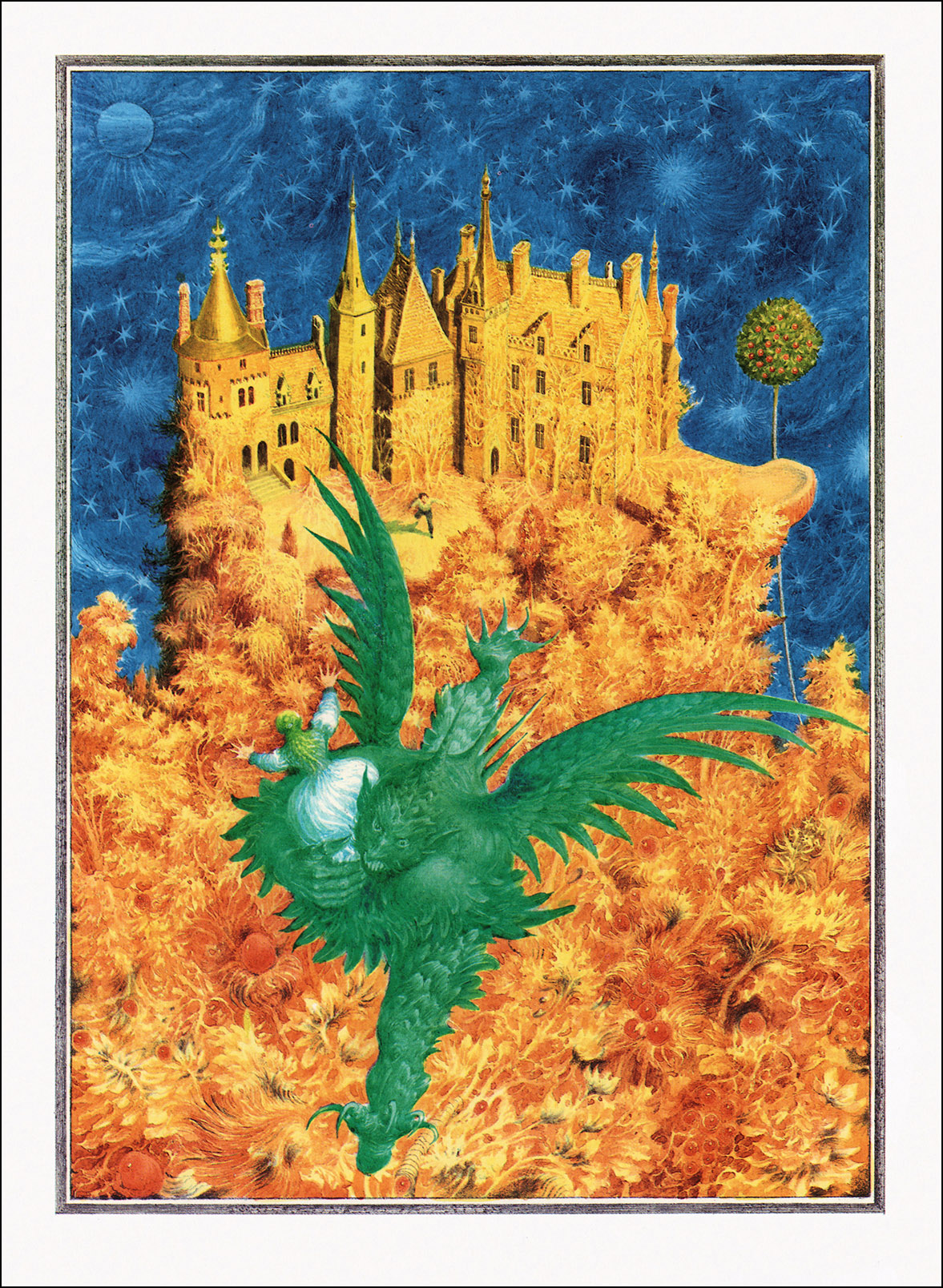 Illustration from Pavol Dobšinský's "Slovak Fairy Tales - The third book from the collection of Pavol," 1988
Illustration from Pavol Dobšinský's "Slovak Fairy Tales - The third book from the collection of Pavol," 1988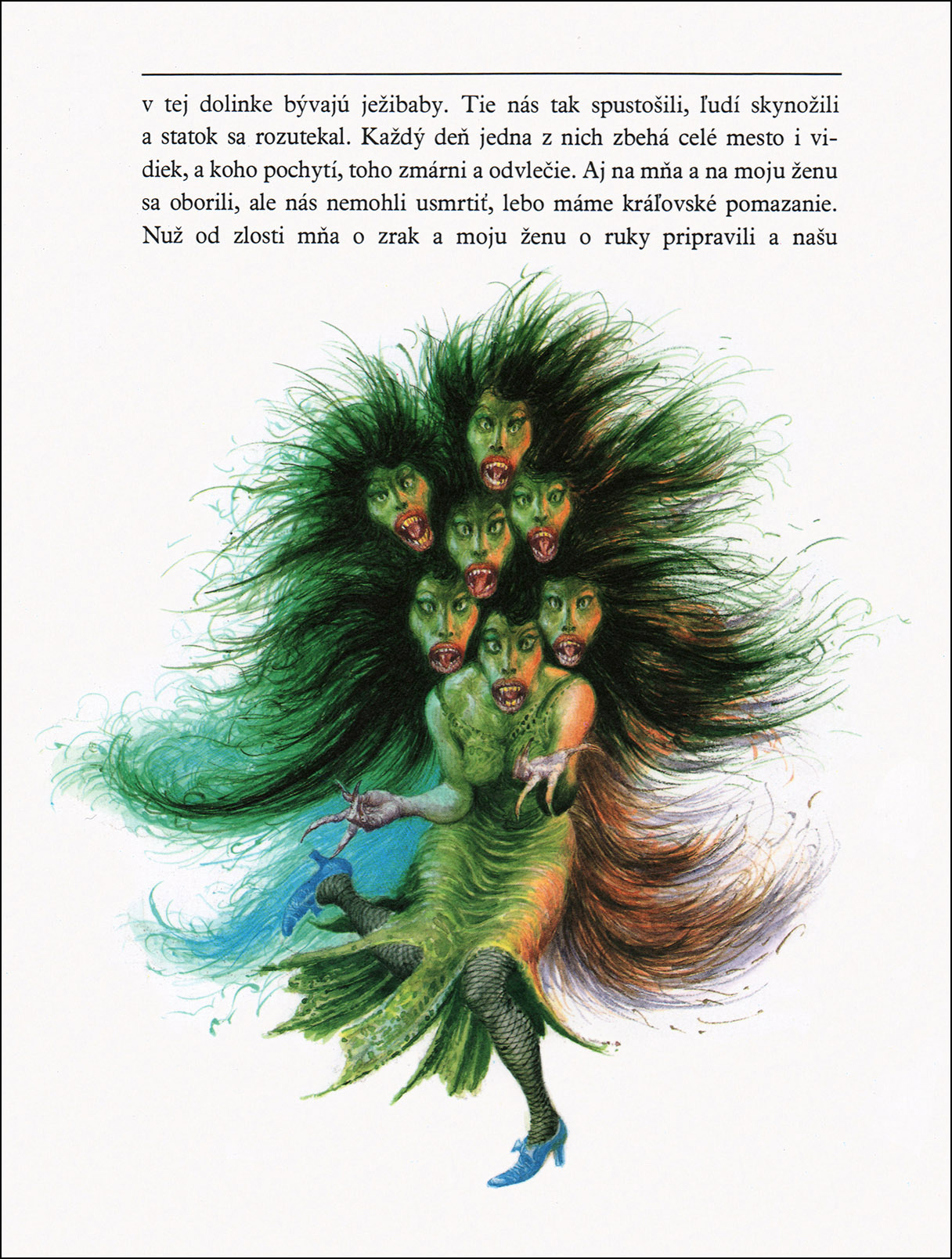 Illustration from Pavol Dobšinský's "Slovak Fairy Tales - The third book from the collection of Pavol," 1988
Illustration from Pavol Dobšinský's "Slovak Fairy Tales - The third book from the collection of Pavol," 1988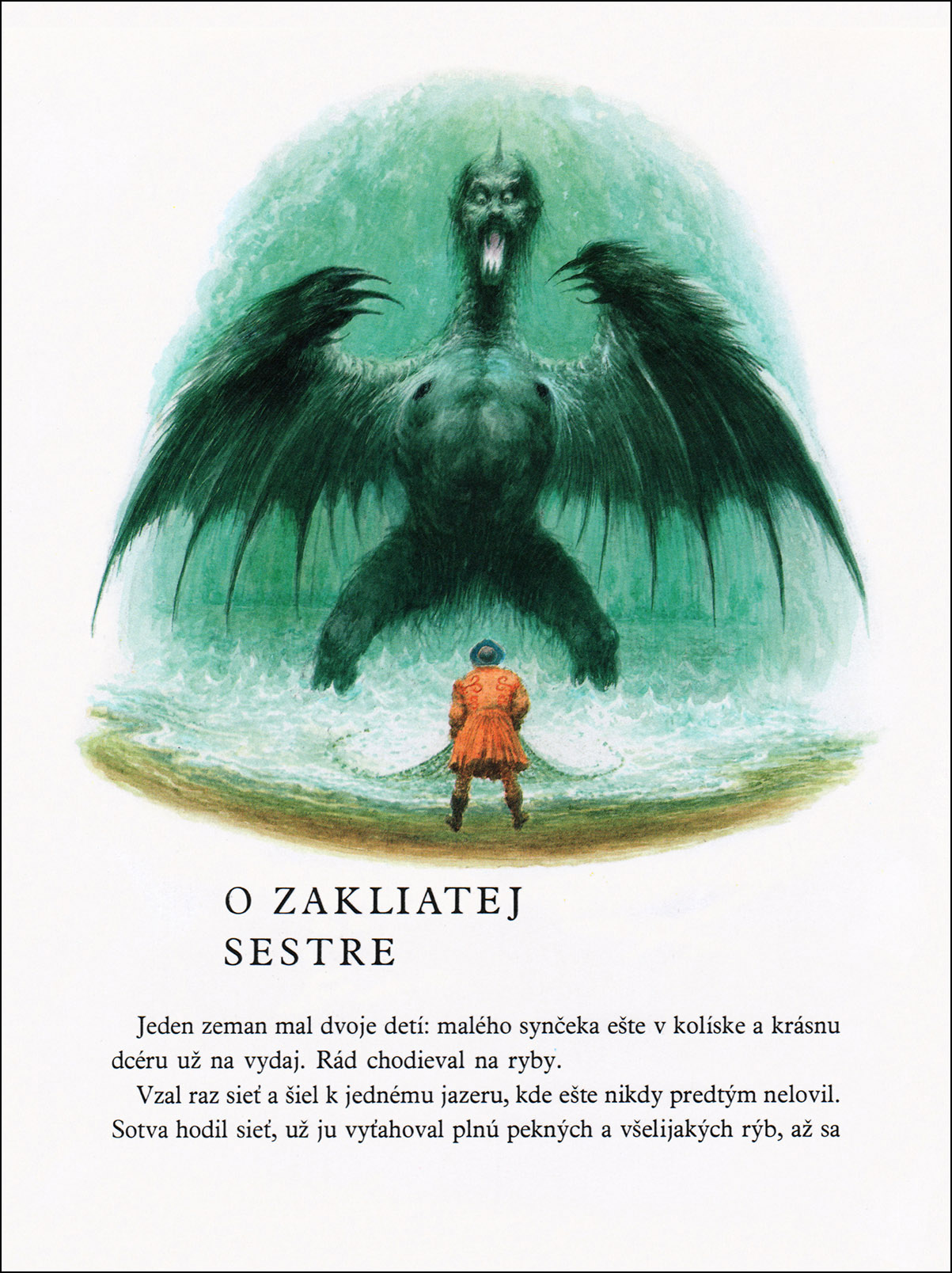 Illustration from Pavol Dobšinský's "Slovak Fairy Tales - The third book from the collection of Pavol," 1988
Illustration from Pavol Dobšinský's "Slovak Fairy Tales - The third book from the collection of Pavol," 1988"Albín Brunovský was born in Zohor, Czechoslovakia on Christmas Day, December 25 in 1935. Brunovský started his early career in art by working on stage set and poster design. He studied at the Academy of Fine Arts in Bratislava under Prof. Vincent Hložník from 1955 to 1961. The Hloznik School was well known for its high artistic and technical preparation in graphic arts and its humanist perspective. For the founder, as for many of his students, Goya’s great graphic cycle "The Horrors of War" served as a pattern or model. Brunovský himself lectured at that Academy from 1966 to 1990. In 1981 he was appointed a professor, creating his own engraving school several years later. Brunovský's work often mirrored that of the modern movement, citation art. Brunovský was also the designer of the last series of Czechoslovak banknotes. His illustrations were primarily for children's books.
Over the course of his career, Brunovsky experimented with various graphic techniques and was highly influenced in his subject matter by poetry and literature, as well, of course, as by other artists. While at school he used the techniques of woodcuts and linocuts. Soon after, however, he began experimenting with "scraper" and chalk lithography. Etching were the characteristic mode of his graphic art work during the mid-1960s. He was, however, a painter too. Many of his illustrations were done in watercolor and he eventually began to paint major works.
As his mastery of various techniques evolved over time, so too did his vision as an artist. When he was young, Brunovsky exhibited surrealistic tendencies—defined as a tendency to individualism and absurdity and the unchecked play of the subconscious. Later his work became more evaluative and critical of Man in relation to himself and society." - quote source
Artworks found at Web Umenia, 50 Watts, and Book Graphics.

1 comment:
This is too beautiful.
It makes me want to cry.
Post a Comment